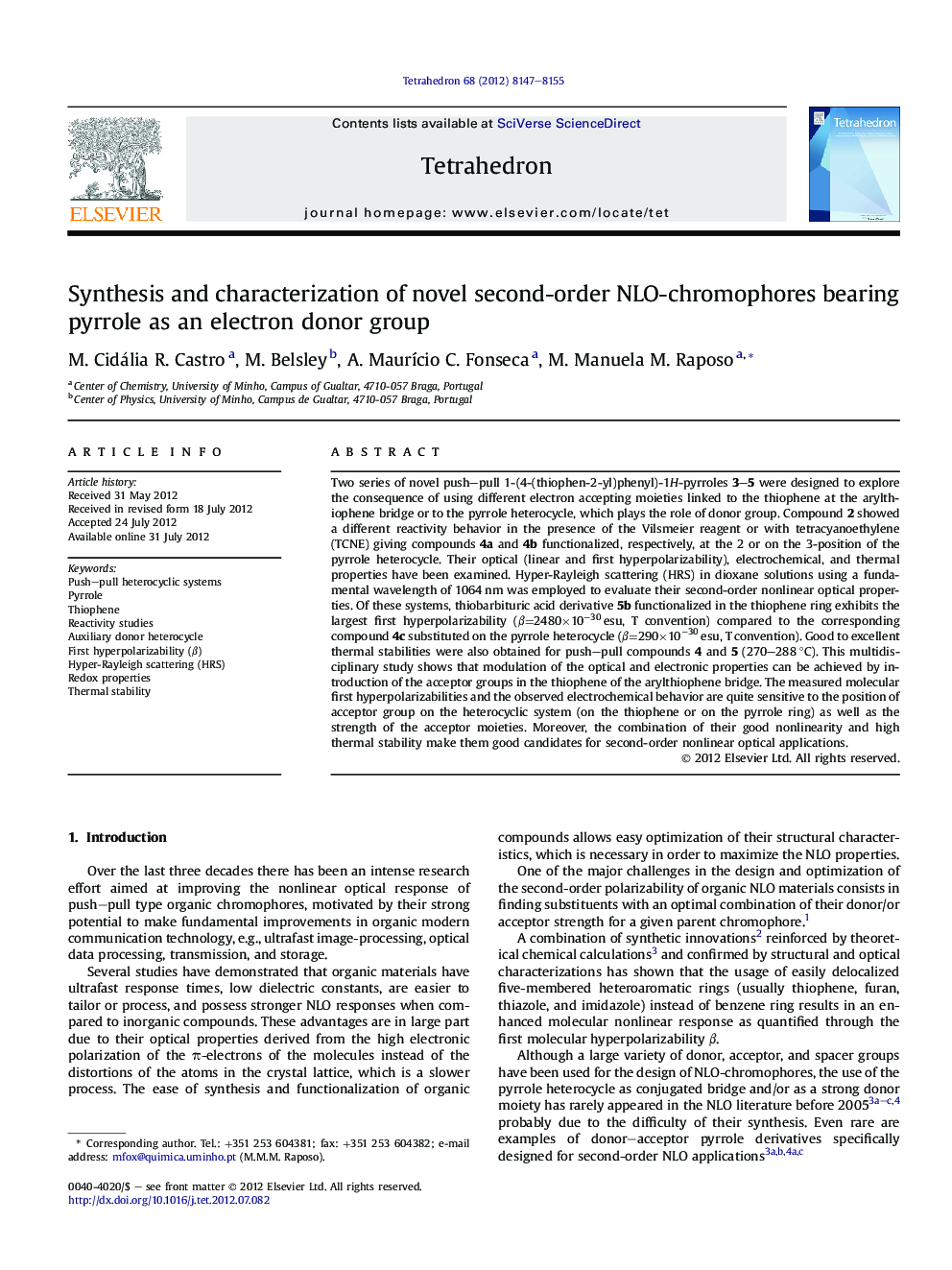| Article ID | Journal | Published Year | Pages | File Type |
|---|---|---|---|---|
| 5219820 | Tetrahedron | 2012 | 9 Pages |
Two series of novel push-pull 1-(4-(thiophen-2-yl)phenyl)-1H-pyrroles 3-5 were designed to explore the consequence of using different electron accepting moieties linked to the thiophene at the arylthiophene bridge or to the pyrrole heterocycle, which plays the role of donor group. Compound 2 showed a different reactivity behavior in the presence of the Vilsmeier reagent or with tetracyanoethylene (TCNE) giving compounds 4a and 4b functionalized, respectively, at the 2 or on the 3-position of the pyrrole heterocycle. Their optical (linear and first hyperpolarizability), electrochemical, and thermal properties have been examined. Hyper-Rayleigh scattering (HRS) in dioxane solutions using a fundamental wavelength of 1064 nm was employed to evaluate their second-order nonlinear optical properties. Of these systems, thiobarbituric acid derivative 5b functionalized in the thiophene ring exhibits the largest first hyperpolarizability (β=2480Ã10â30 esu, T convention) compared to the corresponding compound 4c substituted on the pyrrole heterocycle (β=290Ã10â30 esu, T convention). Good to excellent thermal stabilities were also obtained for push-pull compounds 4 and 5 (270-288 °C). This multidisciplinary study shows that modulation of the optical and electronic properties can be achieved by introduction of the acceptor groups in the thiophene of the arylthiophene bridge. The measured molecular first hyperpolarizabilities and the observed electrochemical behavior are quite sensitive to the position of acceptor group on the heterocyclic system (on the thiophene or on the pyrrole ring) as well as the strength of the acceptor moieties. Moreover, the combination of their good nonlinearity and high thermal stability make them good candidates for second-order nonlinear optical applications.
Graphical abstractDownload full-size image
